It was after I read Sue’s post “White is cool” that I remembered that white was our favourite colour for flowers too. The white oleander was planted in front of the house shortly after we bought it and years before we moved here. I too loved the idea of a white area. Crathes Castle garden, near Aberdeen, had a beautiful white border and I intended to find a place in the garden for a display of stunning white flowers.
However, my initial design of my white summer hedge has now the addition of an untidy but profusely flowering lilac Lavatera and hidden from view underneath is a winter flowering honeysuckle.
We meticulously selected the seed from the whitest Gaura, but then gave up as it self-seeded over the garden and we were happy to replant whatever turned up as the bees did not mind either pale pink or pure white.
And then there are the plants that take up residence of their own volition.
The wild Verbascum has been flowering non-stop since June welcoming the hover flies and
bees of all kinds which gather large quantities of the bright orange pollen early in the morning leaving the yellow petals strewn around the plant like confetti.
Then there are the plants that suddenly beg attention. Some years ago Kourosh “acquired” a couple of seeds of Feijoa sellowiana. The seeds germinated and lived in pots that I tended until I was able to get rid of them into a new border. This year they have shot up to more than a metre in height and flowered for the first time.
The flowers are extremely attractive and as they belong to the myrtle they should also be attractive to bees. I will have to wait until autumn to see if any fruit is formed, another extra as the fruits are edible.
Another additional problem with planning a garden can be illustrated by our vegetable garden. Planning must be done in advance and, as can be seen, we have our long, sturdy tomato stakes in place but very weak, short tomato plants. The cooler, wet June was not to their liking and now the high temperatures that are soaring now in July are drying them out before they have time to grow.
At least the couple of leeks I have left to flower from last year provide me with some amusement as I ponder on the likelihood of making homemade tomato sauce this year.
Kourosh spotted this beautifully fashioned “pot” in the house wall.
I thought it might belong to these wasps that are using the bird bath. However, I think these are European paper wasps (Polistes dominula) and I have seen their nests around in previous years.
I noticed they gather the water differently. You get the careful type that holds onto the side and gently laps from the edge of the water.
Then you get the cool guys who do a full belly-flop onto the water, maintaining themselves by surface tension and float while taking their fill.
The success of the large oregano clump in attracting the bees has also made me think of modifying my planting.
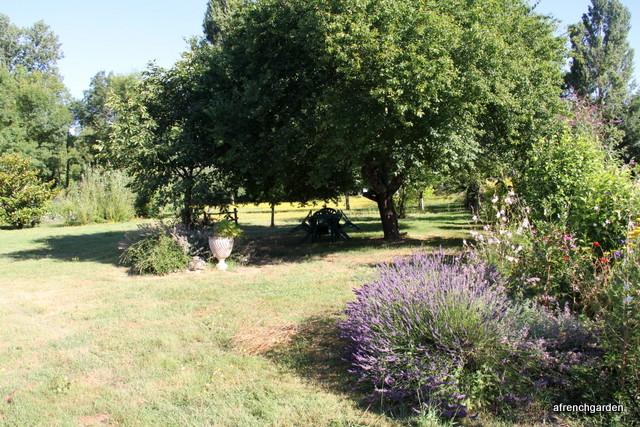 The large clumps of flowers, like the lavender and nepeta, attract more bees, so I am going to try to spread my plants less in the future. However, the garden will have the last word. The yellow haze of cat’s ears (Hypochaeris radicata), visible in the background, has developed on its own.
The large clumps of flowers, like the lavender and nepeta, attract more bees, so I am going to try to spread my plants less in the future. However, the garden will have the last word. The yellow haze of cat’s ears (Hypochaeris radicata), visible in the background, has developed on its own.
Without them, we would miss watching the Dasypoda bees bouncing from flower to flower at this time of year.



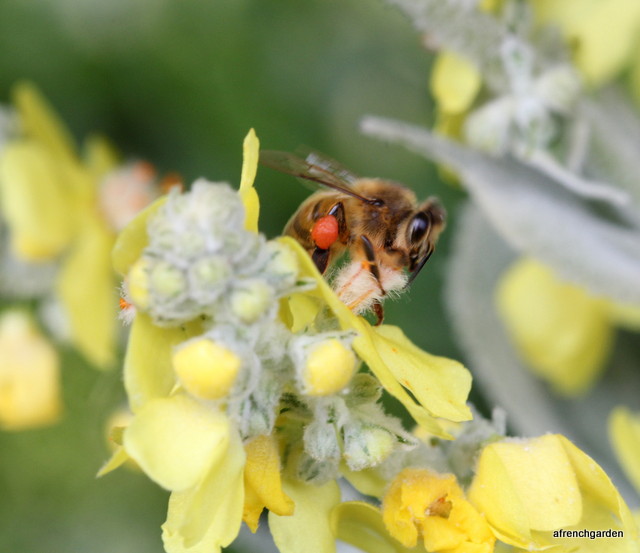

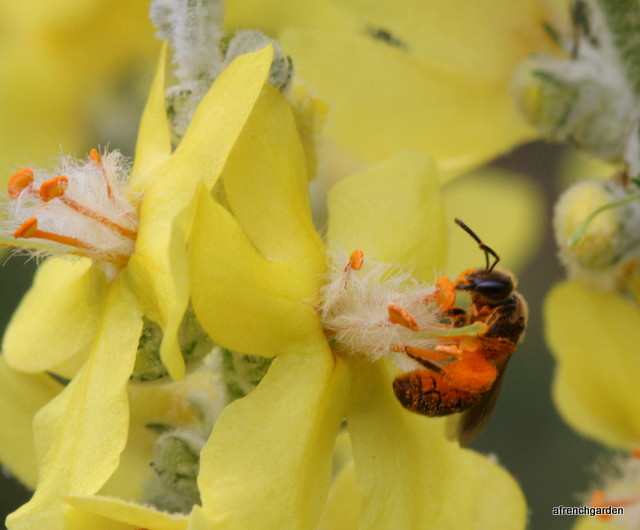
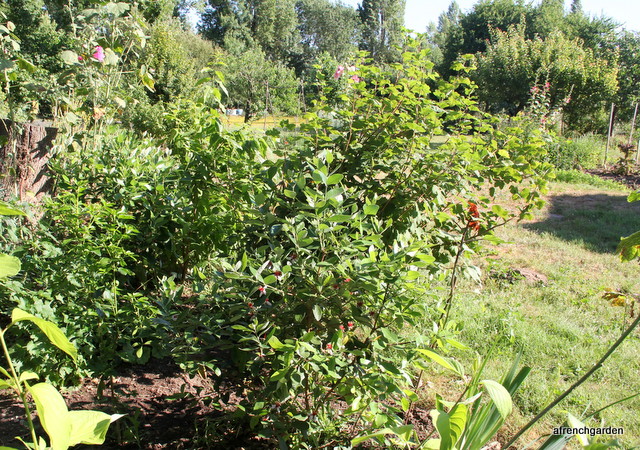
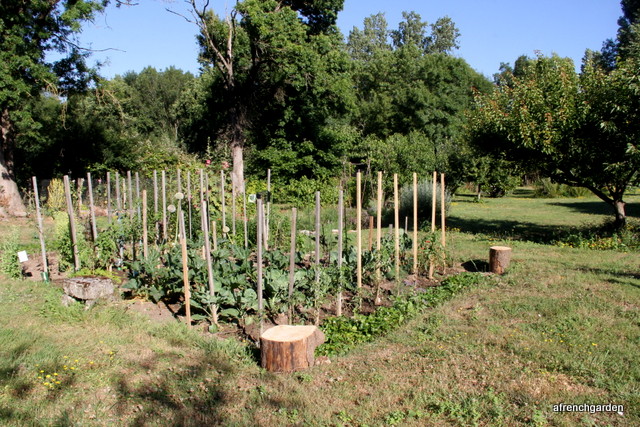
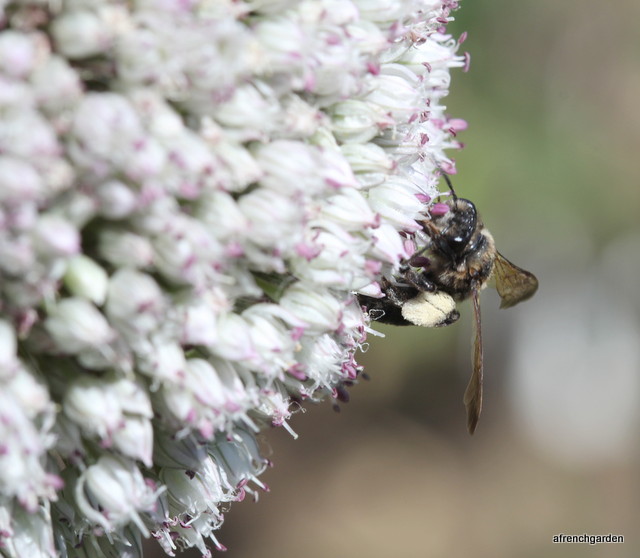

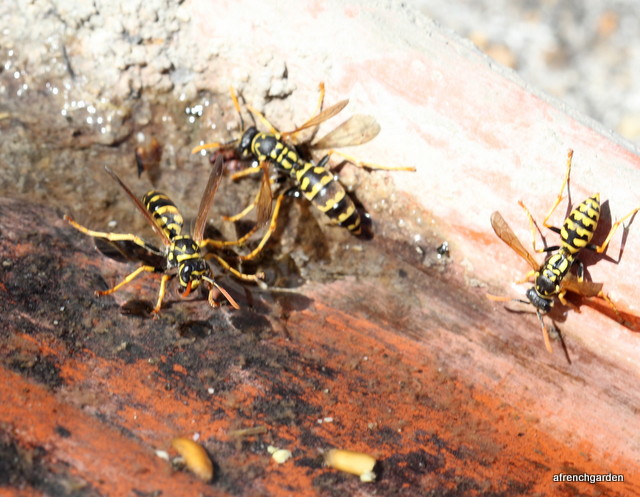
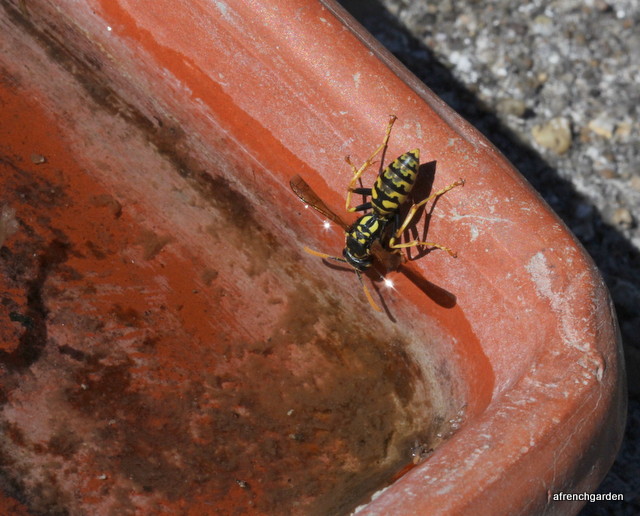
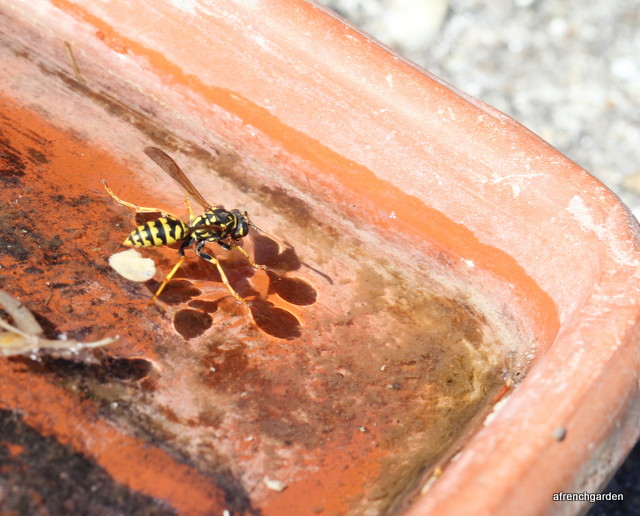
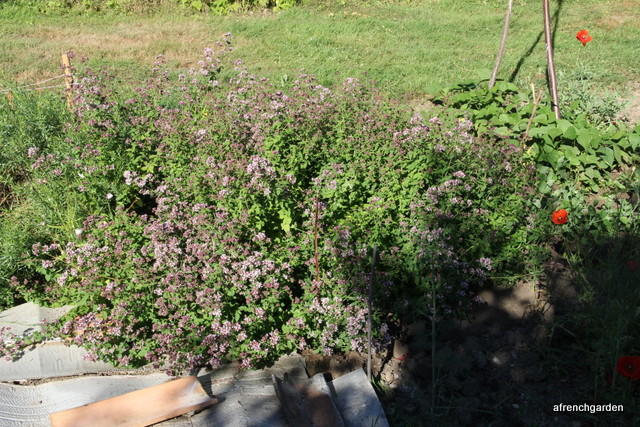

Love the variety and bee-bounty.
LikeLike
Thank you, the bees are a major part of the garden. Amelia
LikeLike
I grow a lot of oregano along the edges of some borders, I read in one of Christopher Lloyd’s books that he recommended doing this. I love it, both for the bees and for cooking… good post . Sue
LikeLike
I think I will use it more in the garden and in my salad. I like a lot of raw herbs like tarragon and I have just discovered how good fresh oregano is. Even the flowers are tasty. Amelia
LikeLike
I’m glad you have so many bees there. I’ve been seeing quite a few here this year as well, so maybe they’re doing better.
LikeLike
The honey bees get the most publicity because there are beekeeping records going back a long way. The wild bees are different because nobody knows what used to be around (apart from a few limited areas) to compare. I hope that as more ordinary folk understand, the better things will get. I am reading “The invention of Nature” about Humbolt (1769-1859) so its not as if these ideas are new. Amelia
LikeLiked by 1 person
I have never tried to grow just one colour in an area of my garden, but imagine it would be lovely – I think most gardens have a mind of their own though and as long as the bees are happy… Your garden looks like a real paradise for the insects!
LikeLike
Sometimes I would like to feel I could exercise a bit more control over it 🙂 Amelia
LikeLiked by 1 person
Such variety it’s no wonder you have so many different bees. It’s like a buffet for them!
LikeLike
They keep me company when I work in the garden. I think the bumble bees probably make the most noise. Amelia
LikeLiked by 1 person
I remember visiting Sissinghurst Garden in Kent when the white garden was in flower, very impressive!
Do you think the “pot” was made by a potter wasp? see this http://johnwalters.co.uk/research/potter-wasps.php
LikeLike
I have seen wasps like this, or very similar, I think they are quite attractive. My pot hatched out, as the article explains, a few days ago. I must try and get a picture of them as I am sure I have seen them on flowers in the garden. Thank you. Amelia
LikeLike
The wide range of plants you have certainly brings its reward with all the different insects that visit your garden.
LikeLiked by 1 person
This is the time of year I get my pay back for the flowers and plants that I have put in during las autumn and spring. Amelia
LikeLike
Fascinating post Amelia, with great photos, and I love the little pot – well spotted. It looks like the weather has been very good in July after your soggy June, and the garden is looking lovely. I think vegetable gardening is really tricky – what’s good one year invariably isn’t the next, and I suppose we’re constantly assessing our results against what is available commercially, which can make home grown seem less successful – but it nearly always performs better on freshness and flavour. Does the Feijoa have a common name – the flowers look stunning,
best wishes
Julian
LikeLike
I think the flavour is the main inducement for us for home grown, I suppose it must be related to the short soil to plate transit time. I find the herbs very handy too. I cannot see myself organising buying small quantities of fresh tarragon, basil etc. The Feijoa originates from South America and is also called the Guava of Brasil over here. It will be interesting to see if we get any fruit this year. Amelia
LikeLike
Thanks Amelia,
Fingers crossed you get some Guavas to try,
BW
Julian
LikeLiked by 1 person
Beautiful photos! The garden looks lovely! I think the wasps could be a Yellow Paper Wasp- European wasps have black antennae only. See: https://www.agric.wa.gov.au/invasive-species/european-wasp-identification-guide for identification.
LikeLike
Yes, I agree it is Polistes dominula, those are its nests that we find here and there around the garden buildings. Amelia
LikeLike
I love seeing white flowers in the evening, when they really stand out and glow in the twilight.
LikeLike
I had not really appreciated their value in the evening, it is another plus for them. Amelia
LikeLike
I like to have white flowers near the terrace if I can as they look luminescent in the evening. But I’m not so strict, I will let in anything that is happy to flower at this time of year. The wasps who make the clay nests are narrow waisted. There are live spiders inside to feed the larvae.
LikeLiked by 1 person
Now that is a useful wasp to have around! Unfortunately, I have more paper wasps than potter wasps at the moment. Amelia
LikeLiked by 1 person
Although I see quite a lot of the clay nests there are always more paper wasps. I suppose the paper wasps make a colony and the others are solitary.
LikeLike
I had not thought of that but you are quite right. It is easy to miss the solitary wasps coming and going but there must be a colony of these paper wasps nearby. Luckily they only build little nests.
LikeLiked by 1 person
Really, I’ve seen enormous ones here, when we moved into the house there was a wooden outbuilding that had almost the entire roof filled by their nest or nests.
LikeLike
I wonder if it is the same species? I’ve checked on the French sites and the Polistes dominula rarely have nests over 15 cm. long and they are only one layer thick. They correspond to the empty mushroom shaped nests I have found here and there.
LikeLiked by 1 person